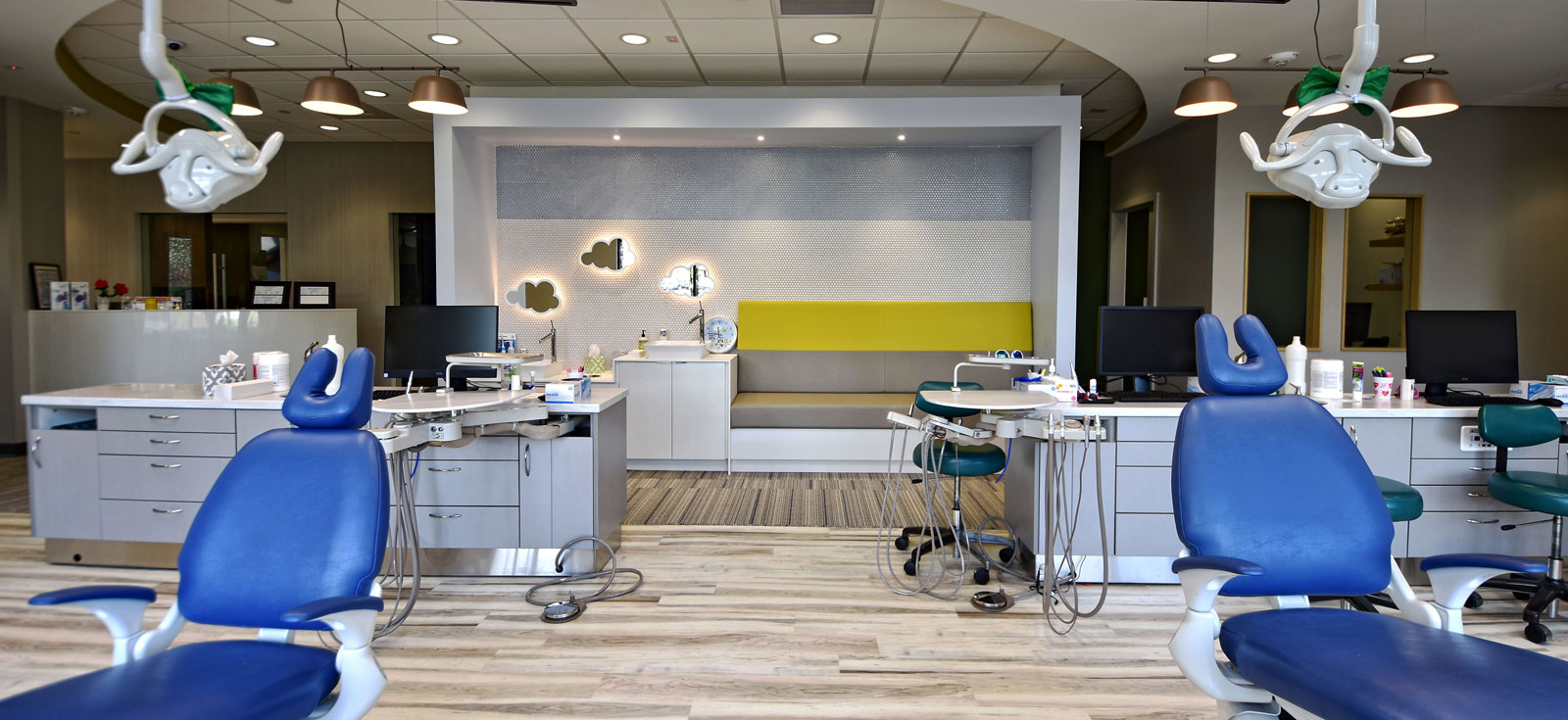Interceptive Orthodontics and Space Maintainers

When you think of orthodontic appliances, like braces, you probably picture them on teenagers and adults. Interceptive orthodontics, however, is geared toward much younger children with an aim to guide jaw development and assist the eruption of permanent teeth in order to reduce the amount of orthodontic work and adjustment needed as a child matures.
Crowded teeth can have a significant impact on your child’s oral health. Alignment problems can make the teeth more challenging to clean, can increase a child’s chance of developing cavities, can contribute to premature tooth loss, they impact your child’s confidence or can cause a variety of other oral health issues.
Dr. Laura is a board-certified pediatric dentist who has had extensive training in growth and development. She works in conjunction with local orthodontists and will assess your child’s growth and tooth alignment at every visit in order to make timely referrals to the orthodontist when necessary.
Space Maintainers
One of the primary purposes of baby teeth is to hold the space for the developing adult teeth. If a baby tooth is extracted or lost earlier than anticipated, the teeth on either side will drift into the space created by the missing tooth. This can lead to space loss and crowding. Space maintainers are used to preserve space for permanent tooth eruption and help to avoid future problems related to crowding.

How Do Interceptive Orthodontics Work?
Interceptive orthodontics simply means diagnosing and treating malocclusions (malocclusions are problems with teeth due to spacing issues or skeletal growth discrepancies) as soon as they are detected.
Once a child’s permanent teeth are developing and beginning to erupt, Dr. Laura can evaluate the child’s developing jawbone structure to determine whether he or she stands to encounter orthodontic problems. As a child grows, it’s no surprise that their jawbone continues to grow, too. The size, placement, and timing of the loss of baby teeth with the eruption of permanent teeth will affect the way your child’s teeth emerge and his or her jawbone develops.
Identifying problems before they occur allows us to prevent them, using interceptive orthodontics. As a result, your child’s jawbone will develop properly and permanent teeth will emerge with comfortable and aesthetically pleasing placement in your child’s mouth.
The American Academy of Pediatric Dentistry recommends that children have an orthodontic assessment around the age of seven, regardless of whether or not your child has problems with the alignment of their teeth or jaw growth. The longer this initial evaluation is postponed, the fewer options your pediatric dentist and orthodontist may have to fix certain malocclusions. In the past, orthodontic treatment did not begin until all the permanent teeth are already erupted or very close to it, which is around 12-13 years of age. It was also common for your dentist to remove permanent teeth to correct the bite and allow for room for the final phase of tooth movement. Although this is still necessary in some cases, many more children are able to avoid tooth removal by beginning orthodontic treatment earlier with appliances that make the treatment easier later on in adolescence.
Without interceptive orthodontics, many children experience problems that put their teeth at risk and require much more extensive, complex, and lengthy treatment as teenagers or adults.
Interceptive Orthodontics in Kenmore
If Dr. Laura notices any signs of concern, she’ll discuss your child’s treatment options with you. As a pediatric dentist, Dr. Laura is well trained in orthodontic principles, and will be a partner with an orthodontist in phasing proper and conservative orthodontic treatment for those children who need it. For more information about interceptive orthodontics or to schedule an appointment for your child, contact Kenmore Pediatric Dentistry.










2.png)
